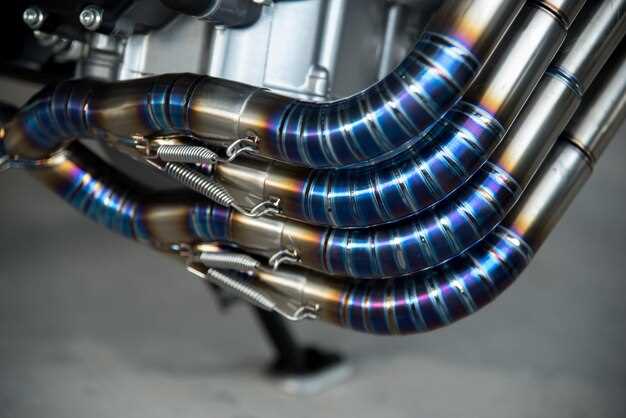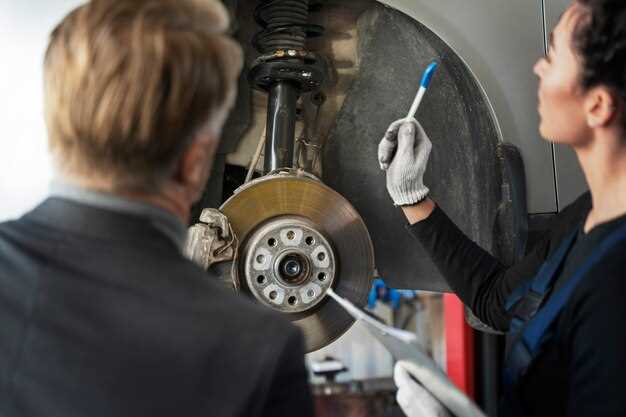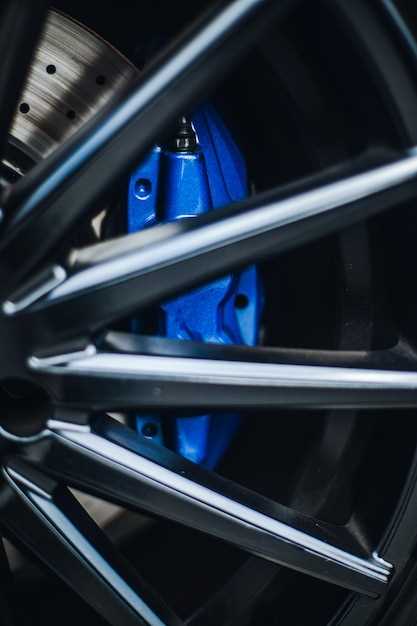
Upgrading your vehicle’s exhaust system is one of the most effective ways to enhance engine performance. A well-designed exhaust system significantly improves the flow of exhaust gases, allowing your engine to breathe more freely. This increased airflow not only boosts horsepower but also optimizes fuel efficiency, giving you a more powerful driving experience.
In addition to performance gains, an upgraded exhaust system can transform your vehicle’s sound. The right components can create a more aggressive and sporty tone that reflects the power under the hood. Whether you prefer a subtle growl or a loud roar, customizing your exhaust system allows you to tailor the vehicle’s auditory profile to match your personal style.
Moreover, a high-performance exhaust system can contribute to the overall health of your engine. By reducing backpressure and enhancing exhaust scavenging, you can prevent wear and tear on engine components, ultimately prolonging its lifespan. Investing in an upgraded exhaust not only results in instant power gains but also ensures a more reliable and enjoyable driving experience.
Choosing the Right Exhaust System Type for Your Vehicle
When considering an upgrade to your vehicle’s exhaust system, it’s essential to understand the various types available and how they can impact your vehicle’s performance and sound profile. Different exhaust systems cater to diverse driving needs and personal preferences.
First, there are cat-back systems, which replace the exhaust pipes from the catalytic converter to the rear of the vehicle. This type of system is popular for those seeking an increase in horsepower and a more aggressive sound without compromising emissions standards. These systems often enhance the vehicle’s audible presence, creating a deeper and more robust exhaust note.
Next, consider header-back systems, which replace the exhaust headers and all components back to the tailpipe. This type of system is typically aimed at performance enthusiasts who want to maximize engine output. The installation of headers allows for better exhaust flow, which can lead to noticeable gains in power. However, headers can significantly affect the sound, often producing a more race-oriented growl.
Axle-back systems are another option, targeting the componentry from the rear axle to the back of the vehicle. These systems are less invasive and focus solely on altering the sound and aesthetics. While they do not provide substantial power gains, they can still enhance the exhaust note, providing a sportier sound that appeals to many drivers.
For those who prioritize aesthetics along with performance, dual exhaust systems can be a perfect choice. They improve the look of the vehicle and enable a more pronounced sound, often associated with muscle cars and performance vehicles. The twin pipes allow for better flow dynamics, thus potentially boosting engine output while altering the acoustic profile.
Lastly, consider the material of the exhaust system. Stainless steel is commonly preferred for its durability and resistance to corrosion, ensuring that the system lasts longer and maintains sound integrity over time. In contrast, aluminized steel is economical but may not endure as long under harsh conditions.
Ultimately, when selecting an exhaust system type, balance your desires for sound enhancement with the goals for performance. Each type offers a unique blend of features tailored to different driving styles, ensuring that you can find the perfect fit for your vehicle.
Understanding the Impact of Pipe Diameter on Performance

When considering an upgrade to your exhaust system, one critical factor to evaluate is the diameter of the pipes. The diameter directly influences engine performance, exhaust flow, and overall efficiency. Here’s what you need to know:
A larger pipe diameter can lead to:
- Improved Flow Rate: Increased pipe diameter allows for a greater volume of exhaust gases to exit the engine, reducing back pressure.
- Enhanced Power Output: With reduced back pressure, the engine can perform more efficiently, resulting in noticeable horsepower gains.
- Better Sound Quality: A larger exhaust pipe can create a deeper and more aggressive sound profile, appealing to enthusiasts.
However, there are also potential downsides to consider:
- Loss of Torque: If the pipe diameter is excessively large for the engine’s specifications, it may negatively impact low-end torque.
- Increased Weight: Larger pipes often weigh more, which can affect overall vehicle performance and handling.
- Cost Factors: Upgrading to a larger diameter exhaust system can be more expensive due to the increased material and manufacturing costs.
When deciding on the appropriate pipe diameter for your exhaust upgrade, consider the following:
- Engine Size: Larger engines generally benefit from larger pipe diameters, while smaller engines may perform better with moderate sizes.
- Intended Use: If your vehicle is used for racing or performance driving, a larger diameter may be beneficial. Daily drivers may not need such modifications.
- Supporting Modifications: An upgraded exhaust system should coincide with other enhancements, such as improved intake systems or tuning, to maximize performance gains.
Choosing the right pipe diameter is crucial when upgrading your exhaust system. Consult with professionals or refer to performance data to make an informed decision that meets your driving needs and enhances engine performance.
Selecting the Best Muffler for Sound Preference and Performance

Choosing the right muffler is crucial for achieving the desired balance between sound and performance in your exhaust system. Mufflers are designed to control the noise produced by the engine while also influencing back pressure, which can affect horsepower and torque. Understanding your sound preference is key to selecting a muffler that meets both your auditory and performance needs.
First, consider the type of sound you want your vehicle to emit. Different muffler designs produce distinct tones, ranging from deep and throaty to high and raspy. For a more aggressive sound, consider chambered mufflers that use internal baffles to create a loud, distinctive tone. Alternatively, if you prefer a quieter operation, a straight-through muffler may be a better fit, as it minimizes restriction and can enhance overall performance without excessive noise.
Performance is closely tied to muffler design. Some mufflers are engineered to optimize exhaust flow, reducing back pressure and allowing the engine to breathe more freely. This results in increased horsepower and torque, particularly in performance-oriented applications. When selecting a muffler, look for options that balance sound preferences with flow characteristics to suit your driving style.
Material also plays a critical role in the muffler’s sound and durability. Stainless steel mufflers often provide a more refined sound and resist corrosion over time, while aluminized steel options may be less expensive but can produce a harsher tone and degrade quicker. Investing in a high-quality muffler can ensure long-lasting performance and sound that aligns with your expectations.
Ultimately, testing different mufflers can provide firsthand insight into how sound and performance can vary. Listening to sound clips online, attending car meets, or consulting with exhaust professionals can help you make an informed decision. Selecting the right muffler ensures that your exhaust system not only enhances engine performance but also delivers a sound that resonates with your personal tastes.
Installing an Aftermarket Exhaust: Essential Tools and Steps
Upgrading to an aftermarket exhaust can significantly enhance your vehicle’s sound and performance. To ensure a successful installation, it’s essential to have the right tools and follow a systematic approach.
First, gather the necessary tools: a socket set, wrenches, a rubber mallet, a saw (if modifications are needed), and safety goggles. Additionally, a jack and jack stands are vital for raising the vehicle securely, allowing easy access to the exhaust system.
Begin the installation process by safely lifting the vehicle with a jack and securing it with jack stands. This will provide sufficient working space underneath the vehicle. Before removing the factory exhaust, it’s advisable to check for any rust or corrosion on the existing components to avoid complications during removal.
Next, disconnect the exhaust system at the joints. Use penetrating oil to ease the removal of rusty bolts and flanges. Once the old exhaust is removed, compare the new aftermarket exhaust components to ensure everything is accounted for. Lay out the new parts, including the muffler and pipes, to visualize the installation process.
Start by connecting the new exhaust pieces, beginning with the pipe closest to the engine. Make sure each connection is tight to prevent leaks that can diminish sound quality and performance. Use the rubber mallet if necessary to gently align components.
As you work your way to the back of the vehicle, secure each section with the provided clamps. Pay close attention to the positioning of the muffler, as this will impact the sound profile of your vehicle. Ideally, there should be enough clearance to prevent any contact with the chassis or suspension components.
After everything is connected, double-check all fasteners for tightness and stability. Start the engine to test the new exhaust system. Listen for any unusual rattles or leaks that may require adjustments. If everything is in order, lower the vehicle back to the ground.
Finally, take your car for a test drive. Experience the improved sound and performance, ensuring that the new exhaust system meets your expectations. Regularly check the connections and components for any signs of wear or issues to maintain optimal performance over time.
Tuning Your Engine After an Exhaust Upgrade
After upgrading your exhaust system, tuning your engine is essential to fully realize the benefits of increased power and improved sound. An aftermarket exhaust typically enhances airflow, which can affect air-fuel mixture and engine performance. To optimize this setup, proper tuning is crucial.
1. Recalibrating the ECU: The Engine Control Unit (ECU) manages various engine parameters, including fuel delivery and ignition timing. After an exhaust upgrade, recalibrating the ECU ensures that the air-fuel mixture is adjusted for the new system. This can often be achieved through a remap or a performance chip, providing greater efficiency and responsiveness.
2. Adjusting Fuel Mixture: With enhanced exhaust flow, your engine might require changes in fuel delivery. An overly rich or lean mixture can lead to performance issues or potential engine damage. Using a wideband O2 sensor can help monitor the air-fuel ratio and allow for necessary adjustments to achieve optimal combustion.
3. Fine-tuning Ignition Timing: Alongside the fuel mixture, ignition timing may also need alteration. A more aggressive tune can improve throttle response and power delivery, taking full advantage of the enhanced exhaust sound and performance. Ensuring timing is set correctly can prevent knocking and ensure efficient power generation.
4. Upgrading Supporting Modifications: If you have significantly changed your exhaust setup, consider upgrading or tuning supporting modifications such as intake systems, fuel pumps, and intercoolers. These components work synergistically with the exhaust to optimize performance and sound.
5. Test and Analyze: After tuning, it’s important to test your vehicle’s performance on a dynamometer. This will provide valuable data on horsepower and torque gains, while also ensuring that emission levels comply with regulations. Use this information to make further adjustments if necessary.
Tuning your engine following an exhaust upgrade not only enhances performance but also maximizes the sound experience. A well-tuned engine paired with an optimized exhaust system offers a thrilling driving experience while maintaining reliability.
Common Mistakes to Avoid When Upgrading Your Exhaust System
Upgrading your exhaust system can significantly enhance your engine’s power and alter its sound to reflect your personal style. However, certain missteps can lead to disappointing results or even damage to your vehicle. Here are some common mistakes to avoid during this process:
| Mistake | Description |
|---|---|
| Choosing the Wrong Size | Installing an exhaust pipe that is too large or too small can negatively affect engine performance. A properly sized system balances backpressure and airflow. |
| Neglecting Sound Quality | Focusing solely on loudness can lead to an unpleasant sound. Consider options that enhance both volume and tone for a more refined auditory experience. |
| Ignoring Compatibility | Not verifying that the new exhaust system is compatible with your vehicle model may cause fitment issues. Always check specifications before purchasing. |
| Overlooking Installation Quality | A poor installation can lead to exhaust leaks and inefficiencies. It is advisable to have a professional handle the installation or follow detailed guides meticulously. |
| Forgetting About Emissions Compliance | Some aftermarket exhaust systems may not meet local emissions regulations. Ensure that your upgrade complies with legal standards in your area. |
| Neglecting Supporting Mods | Upgrading the exhaust without considering other engine modifications can limit performance gains. Aim for a balanced upgrade by considering air intake and tuning. |
By avoiding these common mistakes, you can ensure that your exhaust system upgrade delivers the desired increase in engine power and a satisfying sound that enhances your driving experience.
